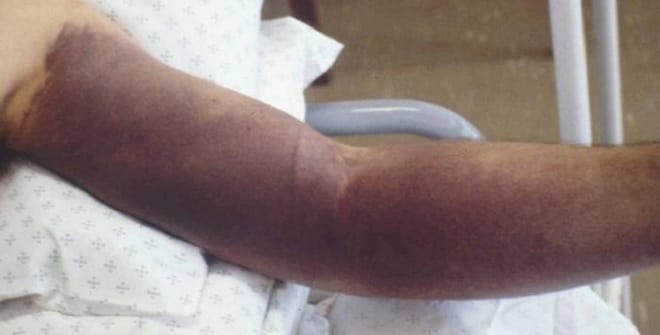
One man dies in Madrid of Crimean-Congo fever
The news has shocked us at Biosalud, because we have been fighting for many years against the infections that can be caused by tick bites. in the human being.
A man has died in Madrid of haemorrhagic fever. called Crimean-Congo fever and a nurse is infected. The incident is being investigated and all kinds of tests are being carried out, and some 200 people are under close observation by health institutions.
This disease is caused by the bite of an infected tick.
Lyme, the best known of the tick-borne diseases
Most studies find that a tick infected with borrelia burgdorferi can transmit it to a person if it bites them.
This can lead to the Lyme disease. To find out, you have to do a test, a Lyme test
Biosalud is an expert centre in the treatment of Lyme and its Medical Director, Dr. Mariano Bueno has more than 10 years of experience in the treatment of this disease and has participated in ILADS training courses. (International Lyme and Associated Diseases Society)
Lyme is a serious disease with 3 clear stages:
- Early Lyme: when you are bitten by a tick and erythema migrans develops.
- Late Lyme: manifested by extreme weakness or tiredness, severe joint pain and stiffness, headaches, facial muscle weakness, eye irritation, skin rashes and irregular heartbeat.
- Chronic Lyme: Develops weeks or years later, and results from the spread of the disease. Spread of the disease can cause multiple rashes and rashes, Bell's palsy and other cranial neuropathies, meningitis, meringoradiculitis, carditis, lymphadenopathy and arthralgia.
Crimean-Congo fever
The Crimean-Congo haemorrhagic fever (CCHF) is caused by infection with a virus tick-borne Nairovirus (Nairovirus) of the family Bunyaviridae. The disease was first identified in the Crimean War in 1944 and was given the name Crimean haemorrhagic fever.

It was later recognised in 1969 as a cause of the disease in Congo, resulting in the current name of the disease.
Crimean-Congo haemorrhagic fever is localised in Eastern Europe, especially in the former Soviet Union, throughout the Mediterranean, northwest China, Central Asia, southern Europe, Africa, the Middle East and the Indian subcontinent.
The manifestation of this disease, which incubates in 1 to 3 days, begins suddenly, in the form of fever, myalgia, dizziness, pain and stiffness in the neck. Subsequently, tachycardia, lymphadenopathy and petechial rash may occur. Renal impairment may also occur, which appears to have been the cause of death in Madrid.
At Biosalud we remain attentive to the development of this news, which has impacted us throughout the day and which has been on the front page of the main media in the country.

